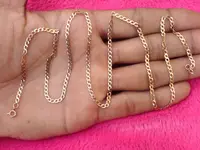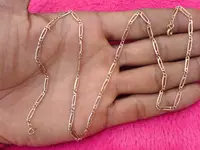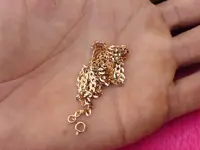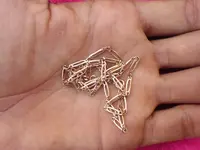If the chain links are large enough you shouldn't have any problem hitting on them, all the better if the chain is balled up. Smaller gold chains, however, can present a whole different issue, especially if they are stretched out or buried at an angle. The tiny links are extremely hard to isolate, especially in a saltwater environment. Your 8" coil and a high sensitivity setting should be able to detect some of them depending on the circumstances but these will often appear as faint broken responses, often like pieces of deeper small junk jewelry like plated thin hoop earrings that have started to corrode or those cheap nickle plated kid's rings, lengths of stainless steel wire, etc. In PP you might get just a faint break in the threshold, or a combination of this along with those here-again-there again chirps. Whenever I suspect the possibility of a small chain I "always" switch to disc mode and then perform a few very short quick/rapid sweeps over the target, often times this will offer you repeated responses so you can better judge the situation. Also, these smaller chains tend to roll with the current and sand so wherever you see these currents sweeping/cutting into the beach these are always likely locations - the majority of the small gold chains that I have found have come from areas like this, this and right on top of the bars or just above and below the waterline at low tide. The bigger chains are pretty much like rings, perhaps rolling a bit more with the currents but still heavy/dense enough to settle fairly close to where they were lost in all but the strongest of surf/currents. Hope this helps.

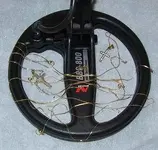
 But got to use caution and go slowly...lot's of can slaw and other sharp crap under that sand as well.
But got to use caution and go slowly...lot's of can slaw and other sharp crap under that sand as well.